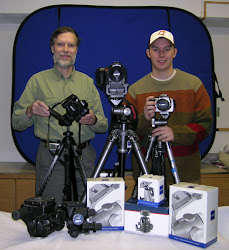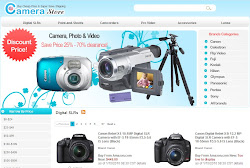Digital cameras now outsell their 35mm predecessors in the general market and it is only the diehard celluloid junkies that maintain allegiance to film. The commercial photography industry now uses virtually exclusive digital technology to produce images due to their immediate shot review and post production efficiency. The feature film industry still maintains loyalty to Super 35mm film however the latest advances in HD technology has threatened even this most sacrosanct of institutions.
Digital cameras are available in a multitude of specifications from cost effective basic models to extremely expensive professional kit. They are user friendly and compatible with editing software making them much more accessible. The commercial interest in digital cameras is because the images that are captured can be checked immediately which enables time and money saving, ensuring the acceptable quality of product before wrapping a shoot.
The principals behind that of digital cameras are based on light-sensitive sensors or pixels. This leaves some diehard disciples of celluloid to claim that the images do not exist in their entirety as they are made of variable dots of light and therefore not a completely accurate depiction of and image. This is quite pedantic however and the ease of use and post-production qualities far out way the potential for pixelated images.
Digital cameras began as the concept of digitizing motion images and digitizing photographs via scanners. These first generations of digital images were used in space exploration where photos would be taken of stars and planets using a mosaic photosensor which periodically captured still digital images helping with the approach and landing to planets. This technology used elements of camera design that were later adapted for development of digital cameras.
The next generation of semi-digital cameras were the analogue digital film cameras which came around the early to mid 80s. The massive benefits were the telecasting of live events in this format via satellite. The issues with the cameras were their astronomic cost and the poor picture quality and the first images were taken of the 1984 Olympics and printed in newspaper print resolution in a Japanese newspaper.
Around 1990 the first generations of digital cameras as we know it following on from the formation of the first jpeg and mpeg standards were created. Over the last 10 years the price of digital technology has dropped significantly, with some early models demanding 10,000GBP plus. Digital cameras now dominate the market and in some areas have rendered celluloid almost obsolete.
The continual advances in digital technology with higher resolutions and high definition push the prices of older models down making them affordable and practical.
Thanks To : best sport goods store Best Cameras Digital Store







0 comments:
Post a Comment